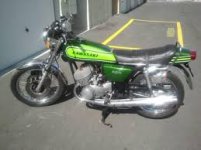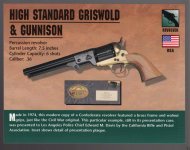GatorFarmer
Member
Some miles from where I lives is the location of the Fetterman Massacre, near old For Phil Kearny. It happened just a few years after the Civil War. The infantry involved still had muzzle loading Springfields, breech loaders not arriving until around the time of the Wagon Box Fight (also nearby).
Cap and ball revolvers were still standard issue at the time, and continued to be found in use for a while, though rapidly lost popularity to cartridge arms.
By the time Elmer Keith took to writing, only a few of the oldest old timers were familiar with the older pre cartridge revolvers.
Noticing the sometimes bitter cold here, and other days that are just plain wet in the winter, I found myself wondering. Obviously these cap and ball revolvers were carried and used. But how reliable and effective were they?
If carried loaded,would the charges of blackpowder go bad or be degraded by temperature and humidity?
How effective were they as weapons, since the 36 caliber seems to have fired what amounts to a single piece of buckshot?
Cap and ball revolvers were still standard issue at the time, and continued to be found in use for a while, though rapidly lost popularity to cartridge arms.
By the time Elmer Keith took to writing, only a few of the oldest old timers were familiar with the older pre cartridge revolvers.
Noticing the sometimes bitter cold here, and other days that are just plain wet in the winter, I found myself wondering. Obviously these cap and ball revolvers were carried and used. But how reliable and effective were they?
If carried loaded,would the charges of blackpowder go bad or be degraded by temperature and humidity?
How effective were they as weapons, since the 36 caliber seems to have fired what amounts to a single piece of buckshot?



